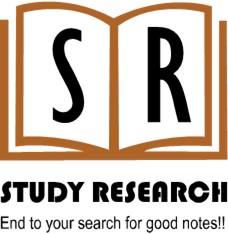For Class 12 CBSE Students – Business Studies
Multiple Choice or Objective Type questions with answers for chapter Organizing
Q1: ABC School has planned for a school fete. The whole activity is divided into task groups each dealing with a specific area like food committee, the ticketing committee and so on. These are under the overall supervision of the official in charge of the event. all the above activities are part of one of the Function of Management. identify that function.
Ans: Organizing
Q2: Define Organizing.
Ans: Organizing can be defined as a process that initiates implementation of plans by clarifying jobs and working relationships and effectively deploying resources for attainment of identified and desired results.
Q3: The purpose of one of the step of organizing process is to avoid duplication and sharing of burden among employees. Select the appropriate step of organizing process out of the following options:
(a) Identification and division of work (c) Assignment of Duties
(b) Departmentalization (d) Establishing reporting relationships
Ans: (a) Identification and division of work
Q4: In Organizing it is essential for effective performance that a proper match is made between the nature of a job and the ability of an individual. Select the appropriate step of organizing process out of the following options:
(a) Identification and division of work (c) Assignment of Duties
(b) Departmentalization (d) Establishing reporting relationships
Ans: © Assignment of duties
Q5: Each individual should also know who he has to take orders from and to whom he is accountable. Select the appropriate step of organizing process out of the following options:
(a) Identification and division of work (c) Assignment of Duties
(b) Departmentalization (d) Establishing reporting relationships
Ans: (D) Establishing reporting relationships.
Q6: Each individual should also know who he has to take orders from and to whom he is accountable. Identify the importance of organizing highlighted in above case.
(a) Clarity in working relationships (c) Adaptation to change
(b) Optimum utilization of resources (d) Effective administration
Ans: (a) Clarity in working relationships
Q7: It provides much needed stability to the enterprise as it can continue to grow in spite of transition. Identify the importance of organizing highlighted in above case.
(a) Clarity in working relationships (c) Adaptation to change
(b) Optimum utilization of resources (d) Effective administration
Ans: © Adaption to change
Q8: ____________ is the outcome of organizing process. Fill the above blank with suitable concept .
Ans : Organizing Process
Q9: “ Organization structure is an indispensable means: and the wrong structure will seriously impair business performance and even destroy it”
above definition highlights the importance of appropriate organization structure. Who has given this definition?
(a) Louis Allen (c) Peter Drucker
(b) Thea Haimman (d) Harold Koontz
Ans: © Peter Drucker
Q10: Define organization structure.
Ans: Organization structure can be defined as the framework within which managerial and operating tasks are performed. It specifies the relation between people , work and resources.
Q11: The Organization structure is shown in a_______________. Fill the above blank with suitable concept.
Ans: Organization Chart
Q12: Which Concept of organizing refers to the number of subordinates that can be effectively managed by a superior.
Ans: Span of Management.
Q13: Which of the following is not the advantage of Functional structure?
- Leads to occupational specialization (c) leads to economies of scale
- Increases managerial efficiency (d) easy fixation of responsibility
Ans: (d) Easy fixation of responsibility
Q14: Which of the following organizational structure is suitable when the size of an organization is large, has diversified activities and operations require high degree of specialization.
- Divisional Structure (c) Functional Structure
- Formal organization (d) Informal organization
Ans: © Functional Structure
Q15: Which of the following is not the limitation of Divisional structure?
- Conflict for allocation of funds (c) Managers may ignore organizational interest
- Duplication of activities (d) lead to problem of coordination
Ans: (d) Lead to problem of coordination
Q16: Differentiate between functional structure and divisional structure on the basis of specialization.
Ans:
Basis |
Functional Structure |
Divisional Structure |
Specialization |
Functional Specialization |
Product Specialization |
Q17: Which of the following is not the feature of Formal Organization.
- Deliberately designed (c) Clear working relationship
- Clear set of rules and procedure (d) Independent channels of communication
Ans: (d) Independent channels of communication.
Q18: Which of the following word defines the structure of Informal Organization.
- Rigid (c) Rules
- Fluid (d) Framework
Ans: (b) Fluid
Q19: Which of the following is the feature of Informal organization?
- Result of personal interaction (c) Independent channels of communication
- Group norms (d) Deliberately designed by top level management
Ans: (d) Deliberately designed by top level management
Q20: Differentiate between Formal organization and informal organization on the basis of Leadership.
Ans:
Basis |
Formal organization |
Informal Organization |
Leadership |
Managers are the Leaders |
Leaders may or may not be the managers. They are chosen by groups. |
Q21: Functional Structure and Divisional Structure belong to which of the following type of organization?
- Formal Organization (c) Both (a) and (b)
- Informal Organization (d) None of the above
Ans: (a) Formal Organization
Q22: “ Delegation does not mean abdication”. What does it imply.
Ans: It implies that the manager shall still be accountable for the performance of assigned task.
Q23: “ Delegation is the entrustment of responsibility and authority to another and the creation of accountability for performance.”
Above definition highlights the essential elements of delegation. Who has given this definition?
(a) Louis Allen (c) Peter Drucker
(b) Thea Haimman (d) Harold Koontz
Ans: (a) Louis Allen
Q24: ___________ flows from top to bottom.
- Authority (c) Accountability
- Responsibility (d) Both (a) and (c)
Ans: (a) Authority
Q25: Complete centralization would obviate the need for (I)_____________ and complete decentralization would obviate the need for_(ii)_____________.
- (i) need for higher managerial position (Ii) need for managerial hierarchy
- (i) need for management hierarchy (ii) Need for higher management position
- (i) concentration of decision making (ii) delegation
- (i) lower management (ii) Top management
Ans: (b) (i) need for management hierarchy (ii) Need for higher management position.
Q26: Following concept of Organizing should be applied with caution otherwise it may lead to organizational disintegration.
- Delegation (c) Formal organization
- Decentralization (d) Authority
Ans: (b) Decentralization.

